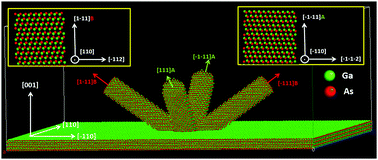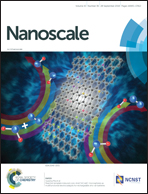Optimizing the yield of A-polar GaAs nanowires to achieve defect-free zinc blende structure and enhanced optical functionality†
Abstract
Compound semiconductors exhibit an intrinsic polarity, as a consequence of the ionicity of their bonds. Nanowires grow mostly along the (111) direction for energetic reasons. Arsenide and phosphide nanowires grow along (111)B, implying a group V termination of the (111) bilayers. Polarity engineering provides an additional pathway to modulate the structural and optical properties of semiconductor nanowires. In this work, we demonstrate for the first time the growth of Ga-assisted GaAs nanowires with (111)A-polarity, with a yield of up to ∼50%. This goal is achieved by employing highly Ga-rich conditions which enable proper engineering of the energies of A and B-polar surfaces. We also show that A-polarity growth suppresses the stacking disorder along the growth axis. This results in improved optical properties, including the formation of AlGaAs quantum dots with two orders or magnitude higher brightness. Overall, this work provides new grounds for the engineering of nanowire growth directions, crystal quality and optical functionality.



 Please wait while we load your content...
Please wait while we load your content...